NYC Neighborhoods
A Tour of the Stacks

On Sunday, December 5, the Stephen A. Schwarzman Building was the site of the 2010 Holiday Open House, the Library's annual thank-you celebration for donors at the Friends level ($40) or above. Besides enjoying building-wide party fun, attendees were offered a rare opportunity to glimpse a part of the Library that is normally hidden from public view: the building's central stacks that lie beneath the Rose Main Reading Room. As a "tour guide" on one of the 18 enormously popular stack tours, I thought it would be fun to share my "patter" with a wider audience.
So, good afternoon, everyone, and welcome to The New York Public Library's Holiday Open House! The Stack Tour begins at the far end of the North Hall of the Rose Main Reading Room, and here's how it goes.
My name is Kathie Coblentz, and I am a rare books cataloger here. Before we get started, I want to remind everyone to stay with the group, and once we're in the stacks, you are not permitted to take photographs, or of course to touch or remove any books. Also, please feel free to interrupt and tell me I'm talking too fast, or not loudly enough, and feel free to ask questions.
First, a bit about how the Library works. The books in the stacks you're about to see belong to the Library's research collections. There are two things you should know about research collections. First, the books can't be borrowed; you have to consult them here. And second, you cannot get the books yourself; they have to be brought to you. Visitors are normally never permitted in the stacks. And since there's no browsing the shelves, you will need to use our catalog to find materials. (As an aside, that's why catalogers are the most important workers in this Library!)
You've just come through the Bill Blass Public Catalog Room. This room formerly held the card catalog, which was closed in 1972.
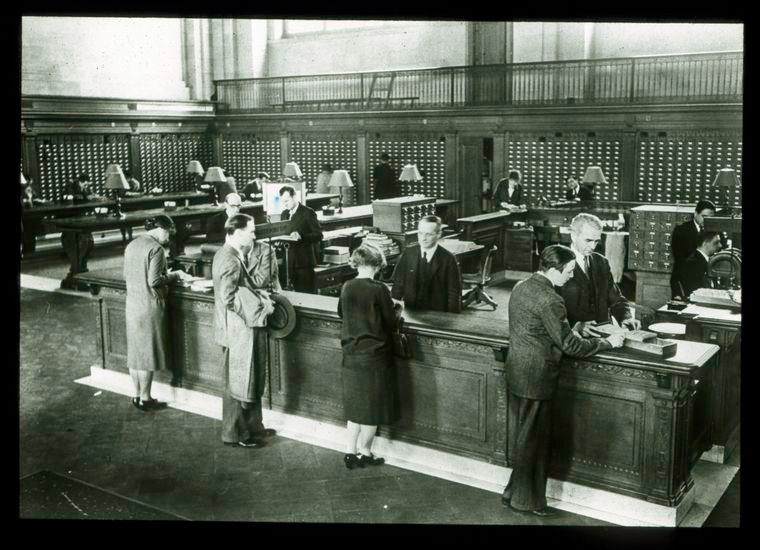
The catalog we use now is online. It holds the contents of the old card catalog and our acquisitions since 1972, and now it also contains the holdings of our circulating libraries. It's available on the computers in the Catalog Room and everywhere else in the Library system, and anywhere in the world via the Internet. Should you need help with the catalog or have any other questions, in the Catalog Room you’ll also find the Information Desk, where friendly and well-informed librarians will help you get the most out of your casual Library visit or your serious scholarly quest.

OK, I'm going to talk just a bit about the room you're in now, the Rose Main Reading Room, so named in honor of the generosity of Library trustee Sandra Priest Rose and her family, whose $15 million gift made its restoration possible in 1998.
This is the jewel in the crown of the New York Public Library. It is well over a city block long, and it's one of the country's largest interior spaces that is not interrupted by columns—an architectural feat partly made possible by the seven stories of solid steel and cast iron bookstacks that lie underneath. Here there is seating for more than 600 readers and an open-shelf reference collection of some 20,000 volumes. (These are books that you don't need call slips for.) In the South Hall, there are 27 public Internet computer workstations as well as several that give free access to hundreds of subscription-only electronic databases. In both halls, patrons can also bring their own laptops and access the Internet via WiFi.
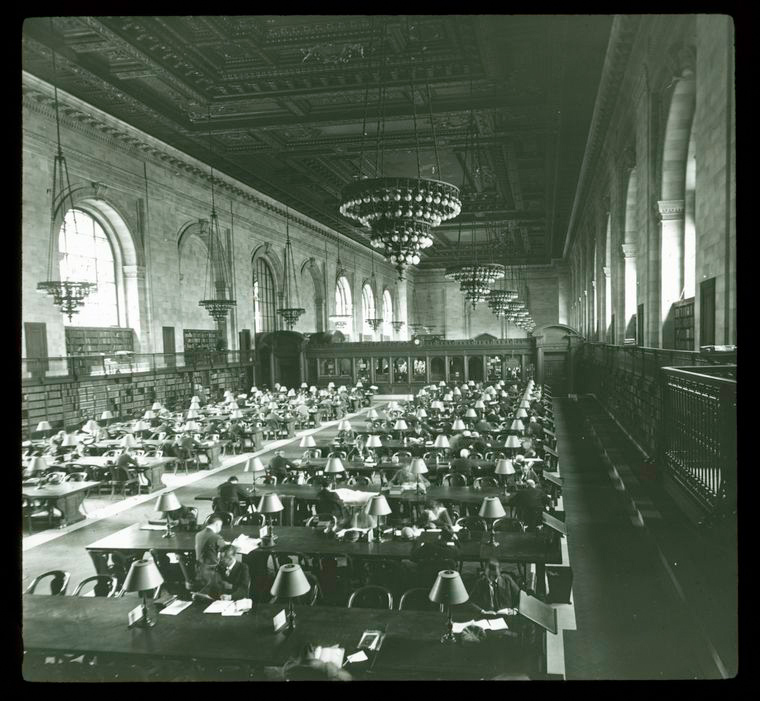
This is The New York PUBLIC Library, so called because all our resources are freely available to the public, and that means everyone. You don't have to be a New Yorker; people can and do come from all over the world to use the materials in this building. It's true that you now need a library card, which is painlessly obtained, to request materials from our stacks, but the reference books and standard works in this room are free for the perusal of anyone who walks into the building. I once overheard a couple of tourists talking as they came up the Fifth Avenue stairs. One asked the other, "Is this the New York City Library?" His friend replied, "This is the world’s library."
Next year, we will be celebrating the centennial of the opening of this building. It was erected on the site of the Croton Reservoir, which had supplied the city with drinking water through much of the 19th century. In a way, the structure that replaced it is a reservoir too: A reservoir of knowledge. And for nearly a century, that knowledge has flowed up to this magnificent room from the seven stories of bookstacks that lie beneath it and literally shore it up.
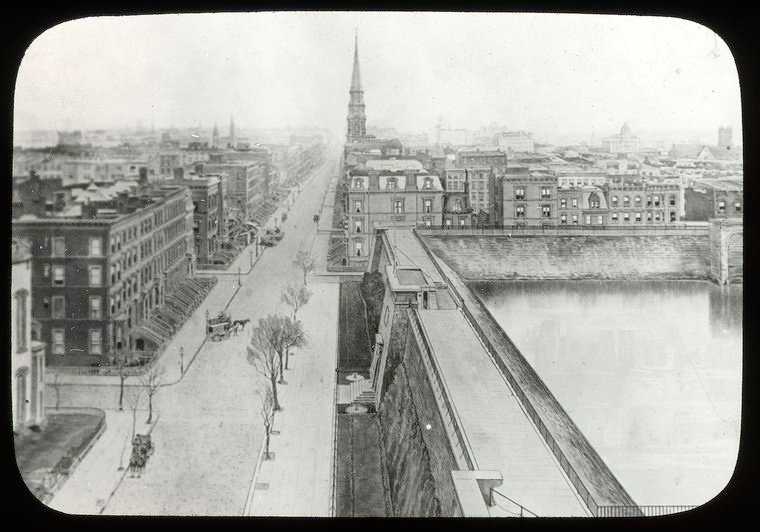
(As we walk along:) Here on Stack Seven are books belonging to a specialized division on the far side of the Main Reading Room, Art and Architecture, as well as to the Photography Collection. These books are requested and received in their respective division. Most books in the stacks, however, belong to the General Research Division and are served up in the Main Reading Room.
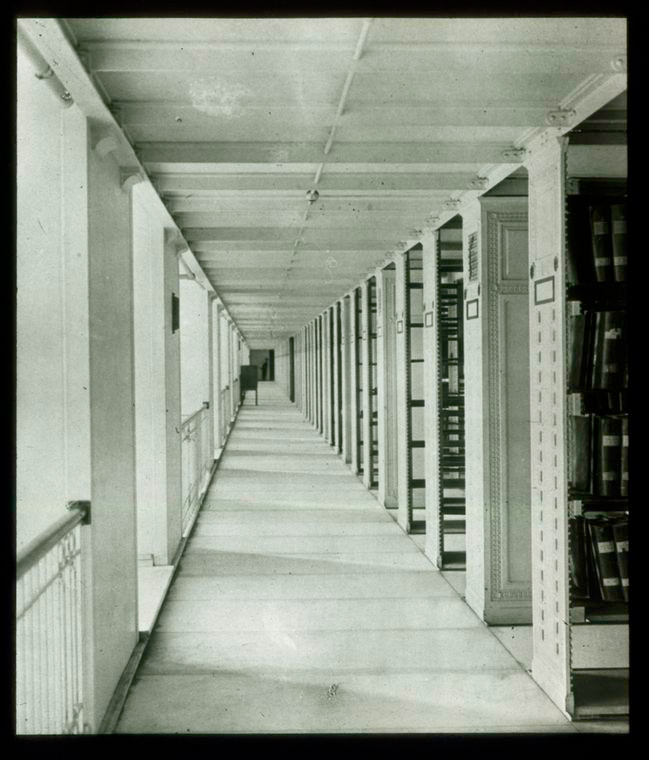
(After we reach the book delivery area in the center of the stacks:) The books are delivered to the Main Reading Room by a vertical conveyor system resembling a giant Ferris wheel. There is also a "dumbwaiter" for oversized books. This is roughly the same system, only employing more modern equipment, as the one used when the Library opened in 1911—minus only the pneumatic tubes for the call slips, as I mentioned earlier.
OK, now I have a few "show and tell" items for you. (Holding up newspaper story:) The first is a copy of a story in the Sunday New York Times magazine from 1905, when the Library was under construction. The headline reads, "New York's Great Public Library Nearing Completion: A Huge Bookcase to Hold 4,500,000 Volumes"—most of which would be in the stacks. Here's how the article begins:
"The skeleton of a bookcase that will hold 3,500,000 volumes—without exception the largest bookcase in the world—that is what one may see to-day back of the great central hall of the majestic marble structure that is slowly rising in Bryant Park.
"It is just completed, this marvelous network of steel bars and uprights, and exemplifies the very latest methods and appliances for the shelving of books. There is nothing like it in the great libraries of the Old World. ... In the Congressional Library... the modern steel bookcase is in use, but not in the solid, impressive mass, distinguishing it over all others, that is shown in the New York Public Library. ...Above it will be placed the spacious reading room of the library, on either side the various halls, offices, and exhibition rooms. Thus surrounded, this monster bookcase becomes, architecturally, the heart of the whole structure, the treasure for whose protection this marble palace is built....
"Even now, with this maze of steel laid bare, it is difficult to appreciate its immense capacity for the shelving of books. A bookcase holding three and a half million volumes means a series of shelves that if laid together, end to end, would measure over eighty miles."
I wish I had time to read more. If you're curious, look up this article (from Oct. 1, 1905) at www.nytimes.com. It's free, you don't even need to come here to read it. (Holding up picture:) Next, here is a picture of the stacks under construction in 1907. (Several others are available in our Digital Gallery.)

"The main bookstack occupies the larger part of the rear of the building ... It is 297 feet long, 78 feet wide, and is made up of seven tiers, each 7 feet 6 inches high, with deck floors of 1 1/2 inch marble. Each stack tier is divided into four quadrants...
"Each section consists of twenty nine double faced ranges composed of ten compartments with six adjustable and one fixed shelf in each compartment...
"In all the main stack contains 98,000 adjustable and 16,000 fixed shelves, which placed end to end would extend a distance of 63.3 miles The capacity of this big stack is about 3,000,000 volumes. In forty-three other rooms in the basement, first, second and third stories Snead bookstacks are provided with a combined capacity of 500,000 volumes, making the total stack capacity about 3,500,000 volumes."
And here's a photo from the 1915 work (p. 78). It shows the construction of the stack you are standing in now:

The stacks are made with no organic materials for better book preservation, and designed to allow 360-degree air flow for ventilation. They're constructed in part with Carnegie steel. You can see the name CARNEGIE at the top of some columns. Of course, Andrew Carnegie is better known in the library context for his generous donation of funds to construct libraries worldwide. By the time construction began here, in fact, he had sold his Carnegie Steel Company to a group headed by J.Pierpont Morgan (another steel and library man), the future magnates of the United States Steel Corporation. From then on, Carnegie preferred to concentrate on philanthropical projects, including funding a total of 67 library buildings throughout New York City, among them 39 New York Public Library branch libraries.
(Holding up newspaper story:) Here's another historical note. Just before this building opened to the public on May 23, 1911, the Times ran an article headlined "NEW LIBRARY READY TO OPEN ON TUESDAY." It begins: "Dr. John S. Billings's dream of a complete public library system for this city has at last come true."
Dr. Billings was the first Director of the Library. Here he recalls the first germ of a plan for this building: "I drew on a small piece of cardboard a diagram of a building which I believed would best suit the purposes of the city. It was a rectangular building, with the main reading room on the top floor over the book stacks. ... The books themselves should be pumped up to the reading room by a sufficient number of electric lifts." (Holding up copy of drawing:) Here is that drawing, as preserved in the Library's archives. (109 boxes of Dr. Billings's papers now reside in the Archives.)
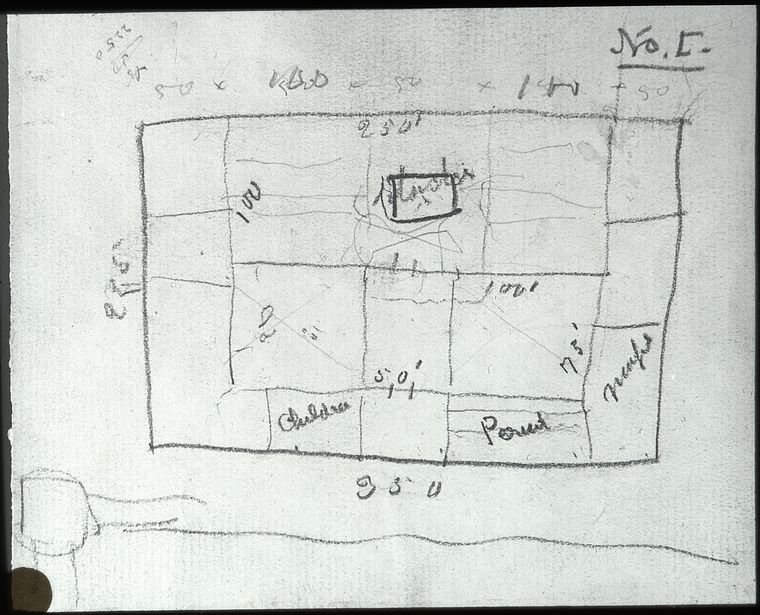
For Library visitors, it's easy to see the beauty and timeless elegance of this Beaux Arts creation, but it's harder to realize (because it's out of the public view) that it also incorporated the very latest in modern library technology at the time: The self-supporting steel bookstack as a structural element of the building.
(Holding up magazine:) The week the Library opened, the cover of Scientific American featured a cutaway view of the stacks. Inside, there's a fascinating article about the new technology employed in the building. You can read this magazine at SIBL, or you can do like me and buy your own copy on the Internet for about $20. You can also download the cover picture from our Digital Gallery. Heather Ross, an imaginative craftsperson who was a special guest at one of the Handmade Crafternoons co-led by librarian Jessica Pigza at the Schwarzman Building last year, used the image to create fabric for a "Library Skirt."
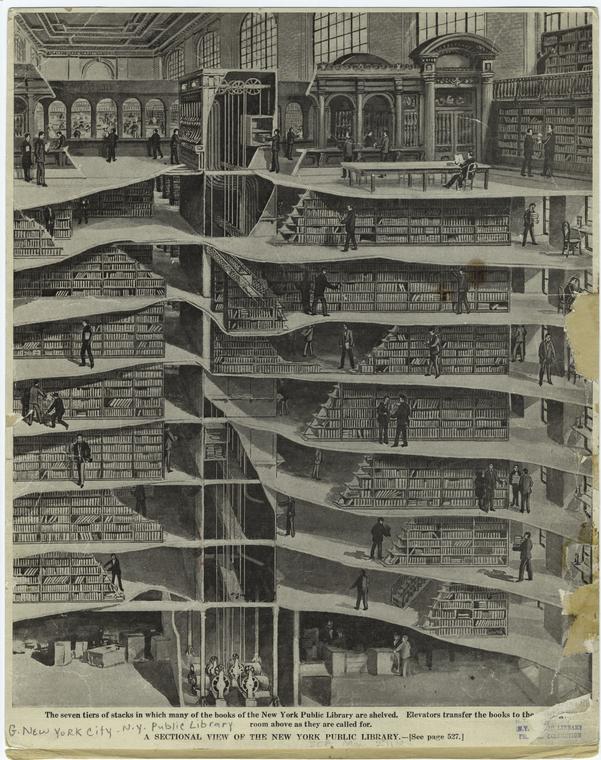
Besides the original stacks, which house between 3 and 5 million items, there is now a stack extension under Bryant Park. (Pointing towards Bryant Park:) It extends all the way back to the fountain out there. It features compact shelving, so more books may be shelved in less space. About a million volumes and other materials are housed there at present. But with all this capacity, we're still out of room. We now also have an offsite storage facility in Princeton, N.J. (shared with Columbia University and Princeton), which holds nearly three million more research library items. If an item there is requested before 2 PM, it should be here the next day.
Dr. Billings devised a unique classification scheme for this library, similar to but simpler than the Dewey Decimal system (used in our circulating libraries) and the Library of Congress system (now used in the Rose Main Reading Room and in SIBL's open-shelf collections). "Billings" was used for the first decades of the Library's history, then gradually abandoned. The Library now arranges almost all new books in the stacks basically by size and by year of acquisition. Since the stacks are closed, there's no real advantage to classing by subject, and this scheme eliminates the need for constant shifting as new materials arrive. Besides, it makes more efficient use of the available space by shelving similar sized books together. Here on Stack Seven, older books are classed by the original Billings system (letters only, like MCH R3.S63) while new ones have "fixed order" numbers like JQF 10-48.
(Holding up newspaper story:) One more history lesson: From the New York Times, May 21, 1911, the Sunday before the Library opened. This article talks about the stupendous (for its time) capacity of the Library's electric plant and the technological innovativeness shown by features such as the book conveyor system. It also talks about another advantage of the stacks: They would help make the collections virtually fireproof. Here's a quote:
"The stackroom stands on its own foundation. That means it has no connection, so far as construction goes, with the rest of the building. Should there be a fire, the stackroom would continue to stand. Its supports go down into the ground, and the building might fall about it without disturbing it in any way. Tightly pressed paper does not burn easily, so that books stacked on the shelves protect one another pretty thoroughly from any blaze."
Finally, the next time you're in Bryant Park, take a look at the rear façade of the Library and remember what you've seen today. In his 1923 History of the New York Public Library, Harry Miller Lydenberg (the Library's third director) described it like this:
"Could anything proclaim more emphatically than the Sixth Avenue facade that here is a high store room with a large reading room on top of it, and could the same notice be expressed more pleasingly or artistically?"

Finally, if anyone would like a closer look at my "show and tell" items, follow me when we exit, and I'll pass them around and try to answer any further questions.
Thank you all for coming and being so attentive, and now please follow me once more. We're going to walk back the way we came, and once again, stay on the right, please. When we get to the stairs, we're going to go down one more narrow flight, then walk back towards the center of the stacks and eventually exit onto the Library's second floor, where the facepainting is going on. Please follow the red ribbons and the person in front of you, and it'll be easier than it sounds.
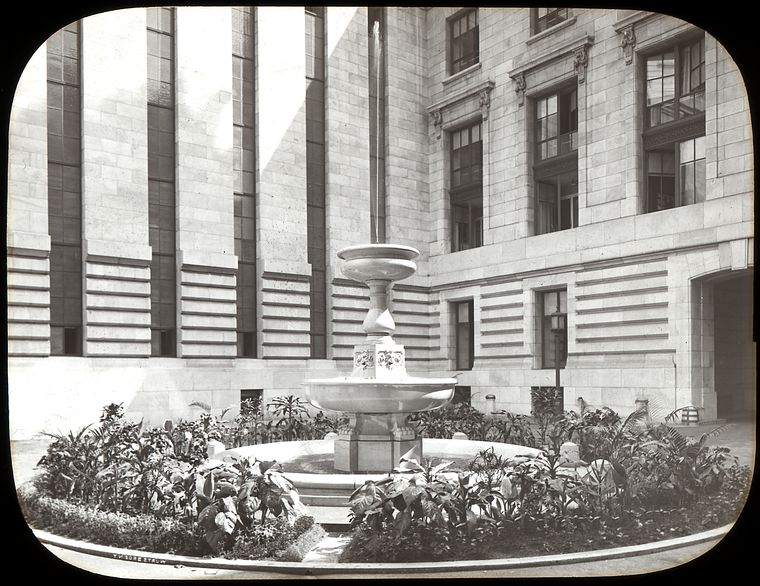
* * *
Become a Friend of the Library and experience the stacks firsthand on a select tour at next year's Holiday Open House. All contributions, large and small, help sustain the Library's free services and preserve our most magnificent treasures. Donate Today!
Read E-Books with SimplyE
 With your library card, it's easier than ever to choose from more than 300,000 e-books on SimplyE, The New York Public Library's free e-reader app. Gain access to digital resources for all ages, including e-books, audiobooks, databases, and more.
With your library card, it's easier than ever to choose from more than 300,000 e-books on SimplyE, The New York Public Library's free e-reader app. Gain access to digital resources for all ages, including e-books, audiobooks, databases, and more.
If you don’t have an NYPL library card, New York State residents can apply for a digital card online or through SimplyE (available on the App Store or Google Play).
Need more help? Read our guide to using SimplyE.
Comments
the stacks
Submitted by Anonymous (not verified) on January 5, 2011 - 4:17pm
Open House Tour of the Stacks
Submitted by LM (not verified) on January 6, 2011 - 8:29am
Reply to LM
Submitted by Kathie Coblentz on January 6, 2011 - 3:37pm
stack tours
Submitted by D Guma (not verified) on January 7, 2011 - 12:24pm
Why remove the stacks, and what then?
Submitted by Peter Capek (not verified) on January 11, 2011 - 12:32am
1911 Scientific American cover
Submitted by Mothnm (not verified) on January 18, 2011 - 6:34am
Reply to Mothnm
Submitted by Kathie Coblentz (not verified) on January 18, 2011 - 12:24pm
Reading this (from the Jan 5 NYPL newsletter)
Submitted by Al Arroyo (not verified) on April 8, 2011 - 5:11pm
Touring the Stacks
Submitted by Alice Wester (not verified) on October 28, 2011 - 12:32am
Job
Submitted by Gil Gaudia (not verified) on June 6, 2013 - 2:29pm
Save the Stacks
Submitted by Mark Alan Hewit... (not verified) on May 7, 2012 - 4:39pm
teaching
Submitted by Jhon Book (not verified) on January 29, 2019 - 11:39am